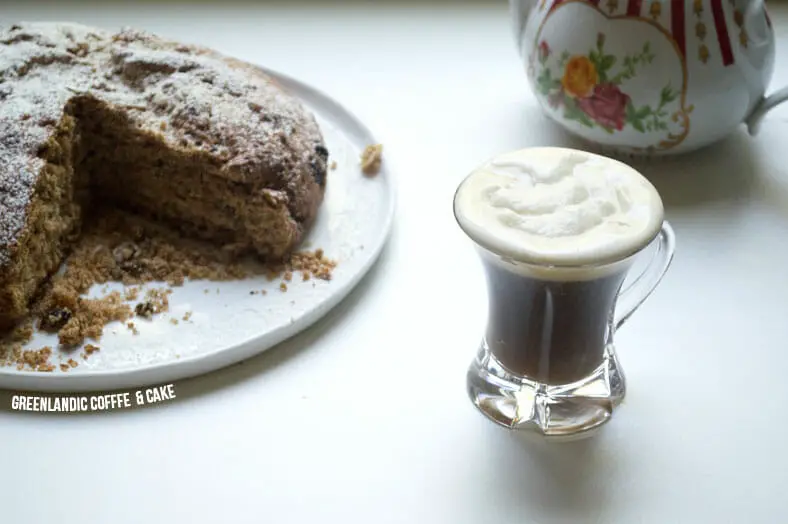Sure, food and drink can be a uniting factor in all climates. It seems, though, that in Greenland this notion of “communal consumption” is taken a step further.
Of course, given the extreme conditions of Greenland itself (which isn’t very green at all), it’s pretty easy to quickly understand how vital a tradition like the kaffemik might have been… even for basic survival. Delicious foods like kalaalit kaagiat just happen to now be an added perk.
Still, without the kaffemik, the local populace might have suffered similar consequences to their Norse counterparts.

Kaffemik, Norse Explorers, a Little Ice Age and the Inuit
Admittedly, we knew very little about Greenland before this adventure, which is odd considering that it’s a country as big as Germany, France, Spain, Italy, Austria, Switzerland and Belgium combined.
Part of the reason for this might very well be because, despite this massive land area, nearly 75% of it is uninhabitable and covered in ice sheet. And for those areas (mainly along the southern coast) that are inhabited, the conditions are harsh enough that survival is by no means a “sure thing.”
There’s no example of this quite like the Norse explorers.
The Norsemen Appear… then Disappear
Before diving into the case of the Norse explorers, we think it’s important to point out that their tale is not at all uncommon for the area. There’s plenty of archaeological evidence to suggest that waves of settlers came and perished in these lands over several millennia. This particular example just happens to be the most recent and with the most intrigue surrounding it.
Greenland was fairly unknown to Europeans until the 9-10th centuries AD. Gunnbjorn Ulfsson was the first to spot the land in passing during an expedition, but it wasn’t until Erik the Red first landed in 985 and created the first Norse settlements on land. As more a fun fact than anything else, Erik the Red (also the father to famed explorer Leif Erikson) named the land “Greenland” as a marketing trick to attract potential settlers… and it worked.
These settlements survived for ~400-500 years before what you could call a Norse “disappearing act.” At some point in the 15th century, there were simply no more Norse people left on the island, and there are very few clues to the exact reason why.
One of the more popular explanations for the sudden disappearance is the Little Ice Age. Starting in the late 13th century, there was more intense growth of pack ice and an overall climate cooling, and while it was not a full-fledged Ice Age, this cold period between the ~12th-18th is often called a “Little” Ice Age.
Particularly during its apex in the 15th-16th centuries, the already harsh climate of Greenland became even harsher, which led to a whole slew of issues for the settlers. As the natural environment degraded, the overall quality of diet for both humans and their livestock decreased, giving way to weakened immune systems and epidemics that ravaged the camp.
Certainly by the 16th century, these Norse encampments were no more.
You May Also Like…
If you love recipes made with alcohol, or just love coffee recipes you ought to check out our spiked eggnog coffee recipe made with brandy from Chile. Love sweets made with alcohol – you wouldn’t believe our apple pie recipe made from scratch with whiskey!
The Inuit
The Little Ice Age didn’t wipe out the entire population of Greenland, however. Around the same time as the Norse arrival, various Arctic cultures from the West – primarily the Dorset and the Thule – had too arrived and settled in other parts of the island.
What’s interesting is how much better these populations fared than the Norse did during the Little Ice Age. Coming from relatively similar Arctic climates, both the Thule and the Dorset settlers had developed highly adaptive practices – like whaling and ice fishing by the Dorset and advanced toolmaking for hunting by the Thule – to increase the chances of survival.
Unfortunately for the Norse, they didn’t seem to pick up on any of these local adaptations some apparent trade activity between the groups. Given that the Norse referred to all outside cultures as skraeling or “savages,” it might have been a “European hubris” that did them in.
Over the centuries, both the Thule and Dorset people would evolve (separately since there was very little intermingling) away from their originating cultures. The newly developing culture and way of life has now become known as Inuit culture, and the greater Inuit makeup now accounts for 80% of today’s ethnic makeup in Greenland’s population.
As the predominant culture until the re-arrival of the Europeans in the 18th century, a lot of Inuit traditions (including the basis for the kaffemik) still reign supreme today.
The Importance of Local Community
Especially as the broader Inuit culture began to formalize, much of its culture hinged upon a deeply community-driven ideology. In Inuit societies, there was no general class structure, and individual property ownership was very much a rarity. Besides tools and hunting gear, “personal property” was really that shared within the local community.
There were, however, certain ways for some to gain status over others. A successful hunter, a highly-skilled seamstress or a master fisherman might all enjoy some short-lived status over others, although this was determined almost entirely by ability and had to be earned.
One such way to earn this status, as it seems, were communal gatherings that would become the kaffemik.
About the Kaffemik
Now usually, here’s a place where we would dive into a particular recipe, but this time around will be a little different.
You see, the kaffemik itself is much more than the special coffee or coffee cake that we’ll show you here. It is as much about social institution as it is about food.
The idea of a kaffemik is to host an intimate gathering with friends and family in which there happens to be yummy foods to snack on and hot drinks to keep warm. As a way to demonstrate status, the host will provide food and drink for the entire kaffemik – sometimes even taking up to several days to prepare! – in anticipation of accommodating their local community. Nowadays, it’s less for the entire local community and more for your friends and family, but the kaffemik still remains a very intimate, social and localized tradition.
One thing we personally like the most about the kaffemik is that it’s incredibly informal. It’s common – or even expected – for your guests to come and go as they please. A good rule of thumb is that every guest might stay for 1-2 cups of coffee and some snacks, but after that there is little obligation to stay unless they feel like it. This proves to be especially helpful if you have a large kaffemik and a crowded room. In this case, it’s good etiquette for those who have been around longest to cede their place to the newcomer.
Eating and Drinking
Of course, there is food and drink to be had at these special gatherings, and two items in particular the host might provide are a special Greenlandic coffee and kalaalit kaagiat, or a special Greenlandic coffee cake.
The Greenlandic coffee is no ordinary coffee by any means. You could even consider it an Irish coffee on steroids. You start by taking a hot pot of fresh coffee and mix in Kahlua, Grand Marnier and whiskey into it. The Kahlua will give it a nice coffee flavor, while the Grand Marnier lends a nice orange-y flavor to it. Both the whiskey and the Grand Marnier (which is a cognac-based orange liqueur) will add a nice warming kick to the coffee as well.
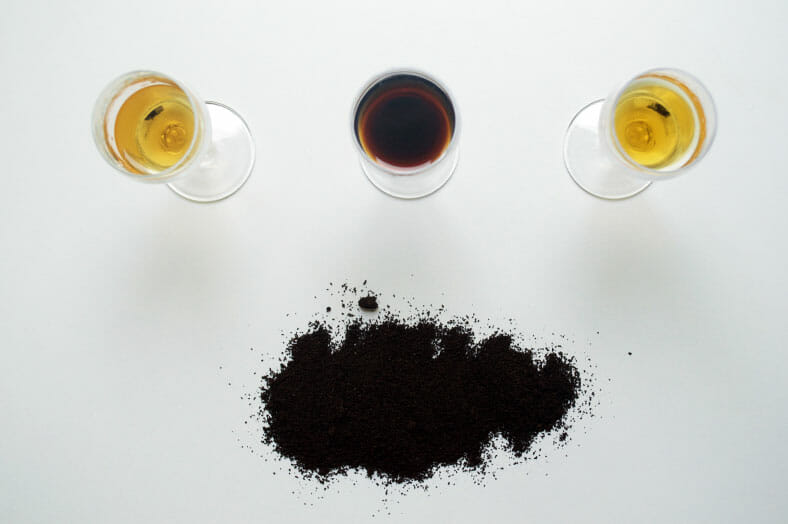
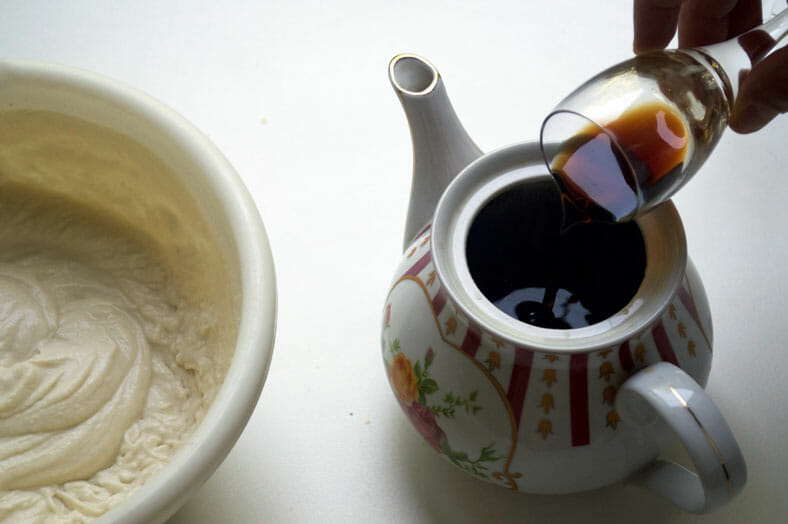
Alongside the coffee, you might have various pastries, small finger sandwiches, soups or just about anything… even pasta salad!
A true favorite at any kaffemik has to be the kalaallit kaagiat. Roughly translated, this refers to “Greenlandic cake,” since the Kalaallit are the largest Greenlandic Inuit ethnic group and Greenland’s other name is Kalaallit Nunaat. The cake itself is very easy to make, needing very little more than butter, sugar, yeast, raisins and flour.


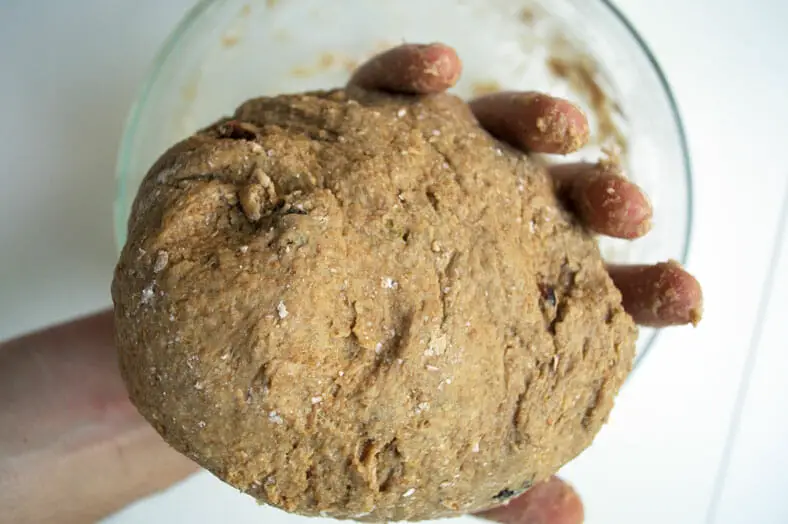
To start, you’ll pour boiling water over your dried raisins, sugar and butter. The sugar and butter will dissolve while the raisins rehydrate, leaving you with a fairly thickened sauce into which to add your remaining ingredients. Add in your yeast and flour, let the dough rise for a bit, and then pop into the oven. It might be one of the easiest cakes you’ll ever make!

When you take the cake out of the oven, you can choose (we recommend it) to brush the top with some milk and to sprinkle a little bit of powdered sugar on top. Since the cake itself won’t come out all too sweet itself, this will give it just a touch of sweetness to it.
Between this coffee cake, the coffee and other fun smackerels, you’ll be well on your way to hosting one delightful kaffemik!
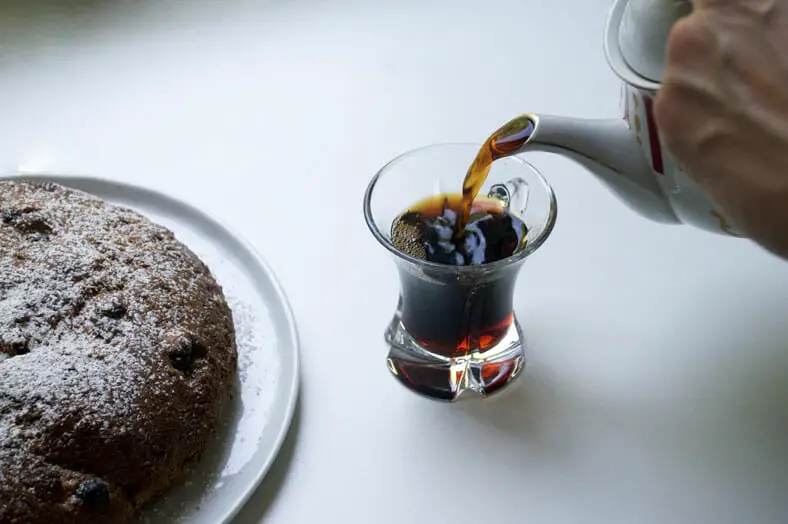
Our Take on the Recipe
Alas, truly Greenlandic recipes are pretty hard to come by, but we tried to make do. For the coffee, we used this recipe as our original reference, and this recipe as a reference for the coffee cake.
Clearly, there are few tweaks needed to a drink as simple to prepare as the coffee itself. All you have to do is make sure you make enough to enjoy… both for the kaffemik and for when you’re preparing!
For the cake, we made some simple adjustments into the recipe to favor slightly healthier ingredients instead. We used a lower-protein organic pastry flour to get a flakier texture, and we swapped in grass-fed butter and, of course, coconut sugar. There was nothing at all revolutionary about our adjustments in our version of the recipe.
While the coffee and the cake are just the tip of the iceberg, they’re a fantastic start to helping you host your own kaffemik soon enough. Enjoy!
Have you attended a kaffemik before? Comment below!


